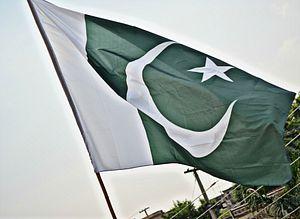Healthcare in Pakistan is a deeply contested affair. Each year, half a million cases of tuberculosis emerge in the country. The doctor-to-population ratio is one of the lowest in South Asia, with one attendant for nearly every thousand. Stunting rates, polio prevalence, and neonatal disorders loom large over a population 220-million strong. And despite these alarms, the country’s budget allocation on health continues to fall disproportionately short of defense, public order, and economic affairs expenditures.
Fortunately, one province in the country – the northernmost province of Khyber Pakhtunkhwa – seems to be turning the tide on Pakistan’s healthcare vows. It is home to the Sehat Sahulat Program, a government-run health protection initiative that provides below poverty line segments significant financial coverage, and province-wide accessibility to secondary and tertiary treatment facilities.
Ever since the launch of Sehat Sahulat’s services in 2016, thousands of citizens below the poverty line have undergone treatments, with majority of them opting for tertiary care – the most specialized and costly bracket of health procedures. The government of Khyber Pakhtunkhwa, held by Imran Khan’s ruling Tehreek-i-Insaf party, has operationalized services across 75 percent of the province’s 35 districts, and is now preparing to launch the scheme on a nationwide scale. As efforts get underway, three elements become central to our understanding of the Sehat Sahulat Program’s functioning, its characteristics, and early success.
Indian Origins
Sehat Sahulat’s origins stem from India’s 2008 Rashtriya Swasthya Bima Yojana (RSBY) Insurance Programme. Under this model, the Indian government aimed to increase below poverty line (BPL) access to inpatient medical care (patients who require admission to hospitals), across both public and private health facilities. In 2011, the Sehat Sahulat team conducted a feasibility study which found RSBY to be the most compatible health insurance model for Pakistan, based on the understanding that Indian states faced similar socioeconomic and urban-rural dynamics as Pakistan.
The provincial government of Khyber Pakhtunkhwa went on to embrace RSBY’s central emphasis on out-of-pocket payment reduction (reduction of personal costs on healthcare) among India’s poor – while augmenting it with new features: a provincially-approved “funds retention formula,” and cross-sectoral public-private health partnerships.
Revenue Through “Fund Retention”
Amid a crippled economy, how does the government of Khyber Pakhtunkhwa generate healthcare revenue?
To address this dilemma, the Sehat Sahulat team had a “Fund Retention Formula” approved by the Chief Minister of Khyber Pakhtunkhwa in 2016. The formula empowered public hospitals in the province to retain a certain percentage of income generated from their treatments. The retained amount is then divided into two portions: 25 percent is transferred to the provincial government, and the remaining 75 percent of the amount is retained with the hospital for service quality improvement, and doctors’ share.
Dr. Muhammad Riaz Tanoli, director of the Sehat Sahulat Program, considers the formula to be an important intervention for retaining competent doctors in the province’s public sector too. “Since many of our doctors practice in private as well, they encourage patients to go to private hospitals for a quick, overnight treatment. To deter such an occurrence, the fund retention formula incentivizes hospitals in such a way that if a private practice yields PKR 10,000 a day for the doctor, he receives PKR 4,000 extra from public hospitals. We strike a financial compromise.”
Meeting Health Security Targets: Sustainable Development Goal 3.8
The Sehat Sahulat model has been built in alignment with Pakistan’s commitment to Universal Health Coverage (UHC) by 2030. The commitment, listed as part of Sustainable Development Goal target 3.8, calls for achieving UHC that includes “financial risk protection, access to quality essential health-care services and access to safe, effective, quality and affordable essential medicines and vaccines for all.”
The program currently offers a 540,000 PKR ($3,360) per-head lump sum to below poverty line segments, applicable to both secondary care (specialist care) and tertiary care brackets (post-hospitalization care).
“Eradicating financial barriers is one of the objectives of the Sehat Sahulat Program,” says Dr. Shahid Younas, Chief of the Khyber Pakhtunkhwa’s Health Sector Reform Unit. “We are taking care of catastrophic health expenditures in the province, in a bid to extend financial protection to 69 percent of Khyber Pakhtukhwa’s population. Neglected transgender segments are also being included. So efforts towards achieving Universal Health Coverage are clearly under way.”
Challenges of excessive administrative autonomy among public hospitals, and growing patient referrals from rural-to-urban hospitals, are certainly areas of concern for the provincial government. On the upside however, if Prime Minister Imran Khan wishes to implement the healthcare program in more densely populated provinces such as Punjab, Sehat Sahulat’s execution in the northernmost Khyber Pakhtunkhwa region would prove significant. Especially in terms of making public-private healthcare collaborations effective at the district-level, and ultimately, rendering Universal Health Coverage a less-distant possibility for the nation.
Hannan R. Hussain is a political commentator for the London School of Economics South Asia Center, columnist, and author.

































